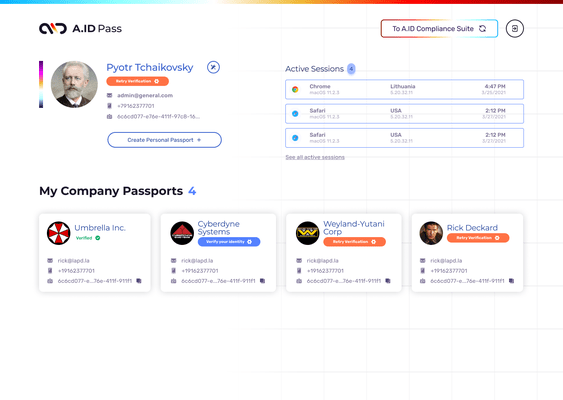
Managing a marketing budget can be difficult, especially if it’s your first time doing it. There are many different things to consider, and it can be tough to know where to start.
Even worse, if you’re not careful, you could end up overspending or misallocating your budget. This can lead to missed opportunities and missed revenue.
This article will give tips on managing your marketing budget while helping you get the most out of your spending.
Steps To Manage Your Marketing Budget
Table of Contents
Here are the steps you need to take to manage your marketing budget effectively.
1. Determine Your Marketing Budget
The first step in managing your marketing budget is determining your available money. Knowing the relative importance of each marketing activity is also crucial.
Let’s suppose you have a limited budget. Depending on the business type, it might make sense to invest more heavily in SEO and social media marketing, which have a longer-term payoff, rather than short-term activities like paid advertising.
The opposite might be true if you’re looking to drive quick sales. In that case, a larger budget for paid advertising might be necessary.
2. Choose The Proper Marketing Channels For Your Business
Once you know how much money you have available to spend, the next step is to decide which channels are best for your business. This will depend on various factors, such as your target audience and industry.
For example, social media might be the best option if you’re targeting young adults. You could even consider influencer marketing, as the potential ROI of successful campaigns with this channel can be pretty high.
However, if you’re targeting an older demographic, you might consider email marketing or direct mail. You could focus on delivering personalized, targeted messages to your customers.
3. Create A Plan And Timeline For Your Marketing Efforts
Once you know how much money you have to spend and which channels are best for your business, the next step is to create a plan. This should include a timeline of when each activity will be carried out first.
You should also set goals for each campaign, such as increasing website traffic or generating more leads by a specific percentage. This will help you measure the success of your campaigns and make any necessary adjustments.
Even if you have a marketing budget close to zero, there are still ways to land clients. A plan that factors in your available resources and marketing channels can help you succeed even on a tight budget.
4. Execute Your Marketing Plan
The next step is to stick to your plan and start implementing it. This is the most challenging part of managing a marketing budget, as you’ll have to stay focused and disciplined to get results.
At the same time, if the created plan is solid and well-thought-out, this step can be gratifying. You’ll see the results of your hard work and dedication in no time.
5. Monitor And Adjust As Needed
Finally, it’s essential to monitor your campaigns and constantly adjust as needed. As you track performance over time, look for areas where you can improve or optimize your efforts. This will help ensure you get the best possible results from your marketing budget.
Challenges You Might Face In Managing A Marketing Budget
While the above steps can help you effectively manage your marketing budget, there are still some challenges that you may face.
Let’s consider the top ones and how to overcome them.
Ensuring You Have The Correct Workflow
The key to successfully managing a marketing budget is ensuring that your activities are appropriately organized and integrated. This means having the proper workflow to quickly and efficiently complete tasks.
To do this, you’ll need to create a system for tracking progress on each project and setting up communication processes between team members. This will help ensure everyone is on the same page and knows when tasks need to be completed.
A workflow analysis of your current process can help identify inefficiencies or problems. You can then use this information to streamline and improve your processes, leading to better results.
Allocating Resources Efficiently And Effectively
You’ll need to ensure that you’re putting the right amount of money into each channel and that it’s being used efficiently.
To do this, you’ll need to research each channel and determine which will most likely generate results. You should also analyze your current budget and determine which channels need more money and resources.
For example, if you want to dominate content marketing with social media, you must ensure your content is of the highest quality, speaks to the right audience, and is spread across multiple platforms. Allocating the right resources to each channel will help you get the most out of your budget.
Staying On Top Of Changing Technology And Trends
Technology is constantly evolving, and so are consumer preferences. You must be agile and adjust your strategies accordingly to keep up with the competition.
You’ll also want to leverage the right tools and channels to reach your target audience. For example, if there’s a new social media platform or advertising opportunity that has the potential to be a big hit, you should consider investing in it. Staying on top of changing technology and trends will help you get the most out of your marketing budget.
Establishing Metrics To Measure Success And Return On Investment
Many fail to meticulously measure their campaigns’ success and return on investment (ROI), but this is very important. Establishing metrics to track the performance of your campaigns will help you make adjustments as needed and ensure that you’re getting the best possible results from your marketing budget.
These metrics could include website traffic, lead generation, sales conversions, etc. Track these over time and adjust your strategy to maximize your ROI.
For example, consider that you’re doing high-ticket affiliate marketing. While the potential to make big profits is quite likely, this also requires a significant investment. To ensure you’re getting the most out of this strategy, track your metrics closely and adjust as needed.
Keeping Track Of All Budget Line Items
Finally, keep track of all budget line items to ensure you’re within your allocated budget. This may seem like a daunting task, but fortunately, there are tools and software solutions that can help make this process much more manageable.
These tools allow you to view your expenses and analyze them for potential savings quickly. This will ensure you don’t overspend.
Conclusion
Managing a marketing budget can be challenging, but it doesn’t have to be overwhelming. By following the steps outlined above, you should have no problem staying within your allocated budget and achieving success with your campaigns.
Over time, you’ll gain more experience and better manage your budget. With this, you might even be able to demand a higher budget from the company if needed.






